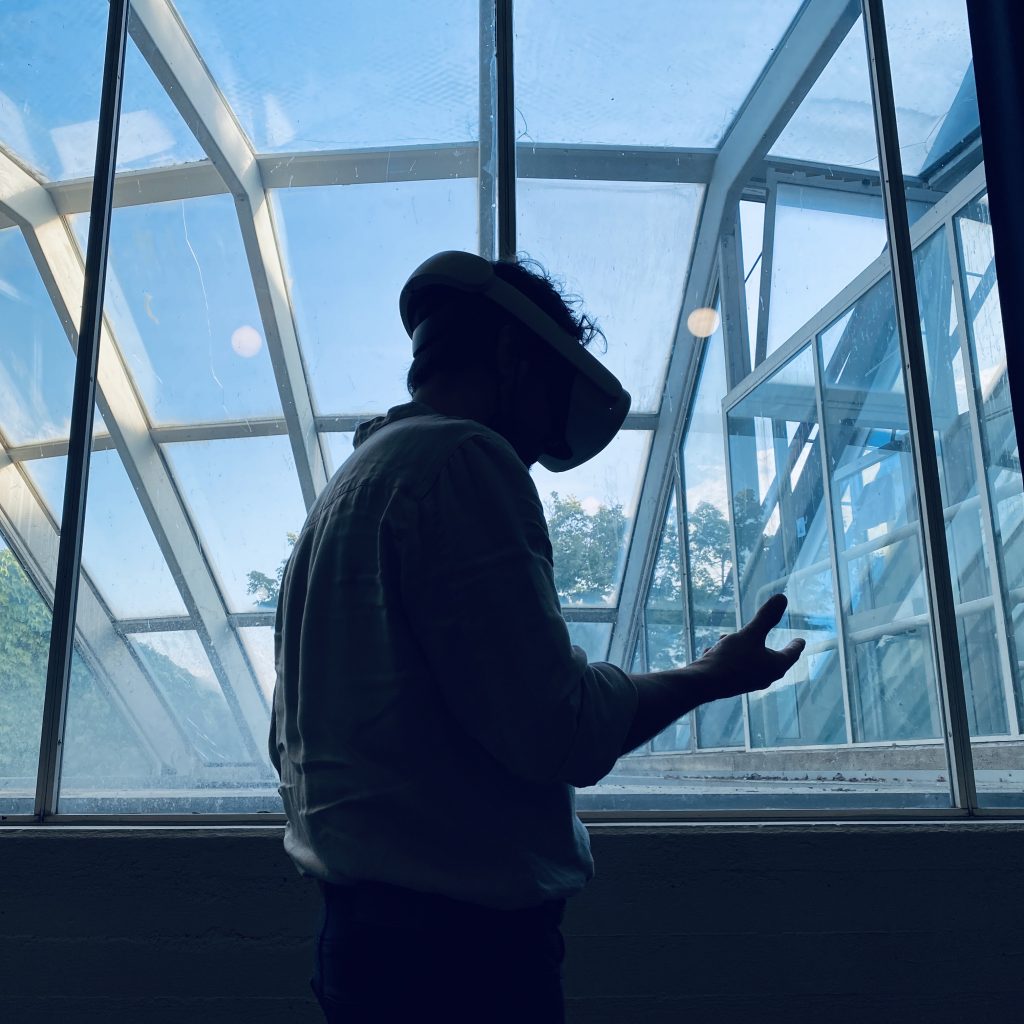We hold a lesson to the students of Valentina Radi, professor of Architectural Composition at the School of Geological and Environmental Sciences at the Urbino University. After listening to the story of T.E.A.M., those present visited the Osaka pavilion.
Here are the words that the architect Valentina Radi shared with us to describe the experience.
“We find ourselves in front of the astonishment of architecture with a new corporeality, new eyes and new consistency of the hands. We are in front of an imposing living organism that invites us to enter its belly.”
At first sight there is a sense of vertigo, then quietness. I think of what I often repeat to my students: “don’t tell me that in your project idea the volumes rotate, because architecture doesn’t move”; here and now, preconceved notions fall to the wasteside.
One wonders what Sacripanti would think when he sees his work floating on the sea, like an enigmatic marine body, immersed in the invisible rustle of winds and skillfully crafted sounds. He would see how the compact and fluid body breathes, projecting on its inside and outside different images of itself, every time at every moment of the day. In the encounter between lights, voids and moving metal structures – whose configurations are never the same – a continuous harmonic motion is tirelessly generated.

In Valentina and John’s project, the definition of “construction site” that has been completed is demonstrated in the clear remake of geometries, materials and mechanisms, interpreting what the original drawings indicate. They make the work its own, drawing on its spatial and compositional strength and allowing the freedom that leaves freshness of reading perception and understanding the architectural body.
Inside the building, you’ll find yourself in a directional spatial void, “designed” by the symmetrical stairwells and the shell. The organic exhibition walkways overlook the inside and the large rotating rings pervade it, like the hidden devices of theatrical and carnivalesque scene changes.
This movement is reminiscent of Hadid’s architecture, in which the perception of fluidity and motion is given by the flow of human bodies in the space. Here we are in motion even standing still, gazing at the catwalks and remaining fixed spectators of a spatiality that changes around our body.
In the top floor there is the shell. It can be touched and the architecture is revealed, becoming human. It shows an open space at the ceiling, reminding us of the archetypal huts, like the freedom of the hypaethral temple that “moves” upwards and makes one touch the sky. In the meantime you can see the horizon in transparency.
There is only one “ornament”: the closing of the circular stairs – rooted in Wright’s style – already observed by the most respected architects. It is a symbol of a broader reference, concerning the decomposition of the great Guggenheim’s components.
A sailing ship, an amphibian, a natural golden spiral and a geometry included in the matrix of Pi all bind us to the classical tradition. The Vitruvian triad leads to firmitas, venustas and mutabilitatis.
The firmitas of the physical orthogonal solidity that finds its center in the visual equilibrium to the perceived motion.The venustas as concert of the elements dominated on the possible spatial uses.The mutabilitatis that crosses the corporal conception of the construction.
I observe the circular holes fixed on the closed and protective basement. They seem to remind one of their measured use by James Stirling, to define the connection to the ground of this imposing interacting city, like the autonomous cities: moving of Archigram.
The membranes convey Da Vinci’s boldness of purpose, which has yet to be applied due to fears of strong architectural and aesthetic choices. Only the courage of ancient men allowed in order to confront great undertakings.
In the circularity of the rings you’ll see the universe.”
If you want to know more about what we do or to visit the pavilion write us at: info@poplab-team.org